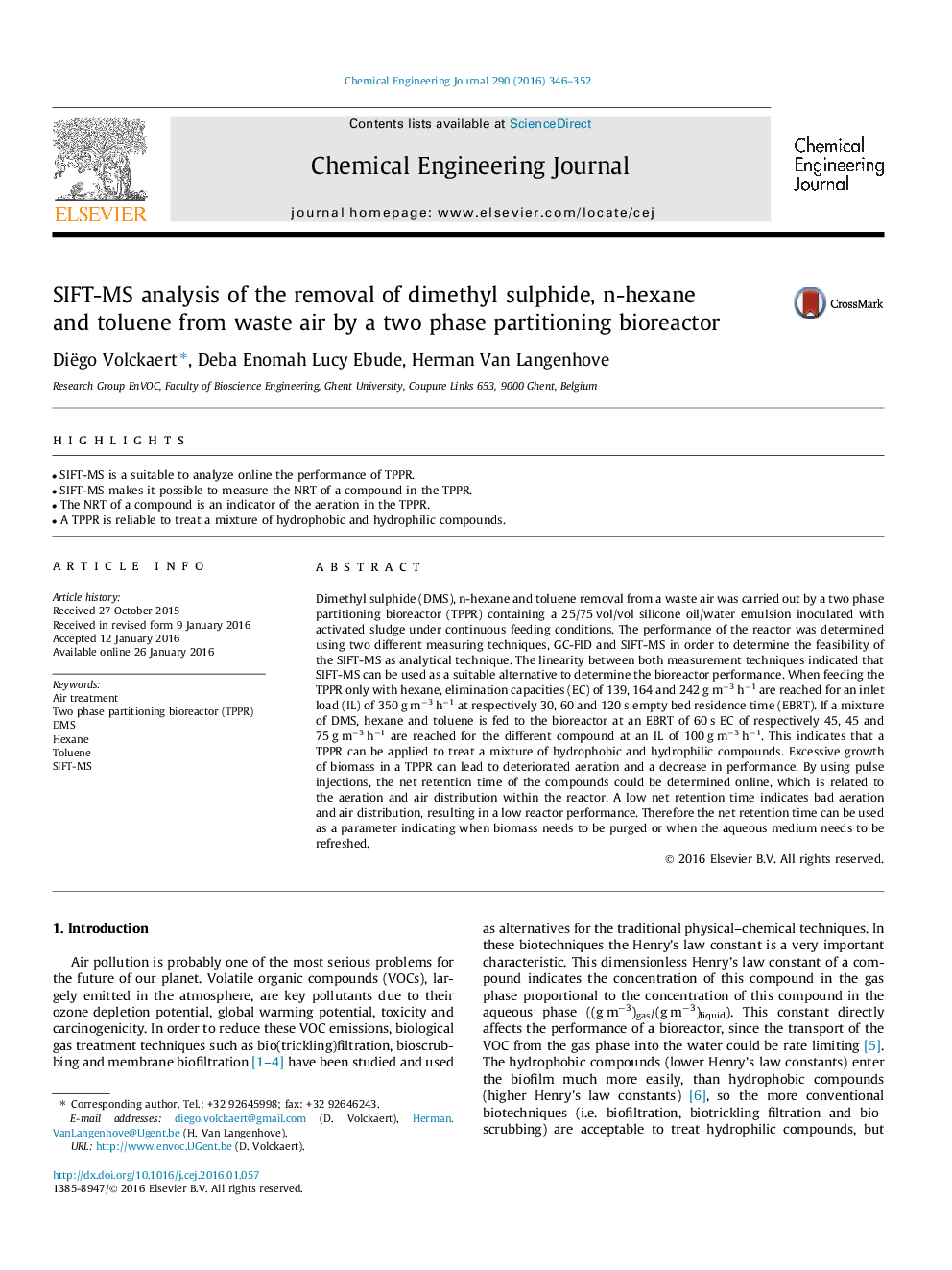| کد مقاله | کد نشریه | سال انتشار | مقاله انگلیسی | نسخه تمام متن |
|---|---|---|---|---|
| 145769 | 456351 | 2016 | 7 صفحه PDF | دانلود رایگان |

• SIFT-MS is a suitable to analyze online the performance of TPPR.
• SIFT-MS makes it possible to measure the NRT of a compound in the TPPR.
• The NRT of a compound is an indicator of the aeration in the TPPR.
• A TPPR is reliable to treat a mixture of hydrophobic and hydrophilic compounds.
Dimethyl sulphide (DMS), n-hexane and toluene removal from a waste air was carried out by a two phase partitioning bioreactor (TPPR) containing a 25/75 vol/vol silicone oil/water emulsion inoculated with activated sludge under continuous feeding conditions. The performance of the reactor was determined using two different measuring techniques, GC-FID and SIFT-MS in order to determine the feasibility of the SIFT-MS as analytical technique. The linearity between both measurement techniques indicated that SIFT-MS can be used as a suitable alternative to determine the bioreactor performance. When feeding the TPPR only with hexane, elimination capacities (EC) of 139, 164 and 242 g m−3 h−1 are reached for an inlet load (IL) of 350 g m−3 h−1 at respectively 30, 60 and 120 s empty bed residence time (EBRT). If a mixture of DMS, hexane and toluene is fed to the bioreactor at an EBRT of 60 s EC of respectively 45, 45 and 75 g m−3 h−1 are reached for the different compound at an IL of 100 g m−3 h−1. This indicates that a TPPR can be applied to treat a mixture of hydrophobic and hydrophilic compounds. Excessive growth of biomass in a TPPR can lead to deteriorated aeration and a decrease in performance. By using pulse injections, the net retention time of the compounds could be determined online, which is related to the aeration and air distribution within the reactor. A low net retention time indicates bad aeration and air distribution, resulting in a low reactor performance. Therefore the net retention time can be used as a parameter indicating when biomass needs to be purged or when the aqueous medium needs to be refreshed.
Journal: Chemical Engineering Journal - Volume 290, 15 April 2016, Pages 346–352